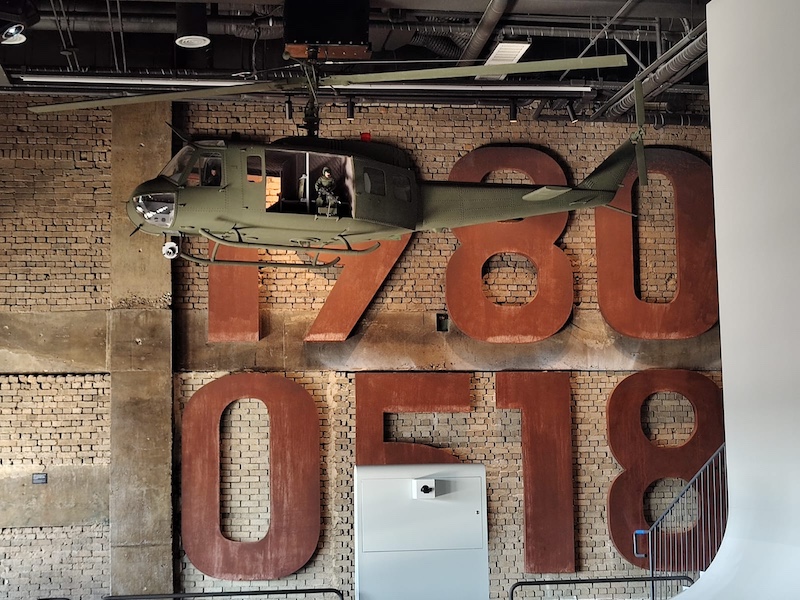【博物之島新訊】Gwangju Massacre in South Korea. The Jeonil Building was converted into the 5.18 Memorial Cultural Hall
The exhibition represents a scene depicting the Jeonil building being strafed by a helicopter during the Gwangju Massacre. (Photo by Maria del Pilar Alvarez)
作者:Maria del Pilar Alvarez(Professor at Universidad del Salvador , USAL; Researcher at the National Scientific and Technical Research Council of Argentina, CONICET)
The Gwangju Massacre is the main landmark in the struggle for democracy in South Korea. Since the 90s, the city of Gwangju become a “city of memory.” It is the only place in the Korean Peninsula that concentrates so many monuments, museums, and exhibitions commemorating the years of oppression and violence suffered under the dictatorial regimen.
There are several memory sites. Some are very popular, like the May 18 Memorial Park, and others are not so well known, like the mural at Chonnam National University. Within the framework of the local active memorialization policies of the past, in 2017, the National Institute of Scientific Investigation discovered 245 bullet marks in the Jeonil building. After four years of renovation work, the building was renamed “Jeonil Building 245” and opened as a site of historical education for the general public.
The building is in an urban central part of the city, impossible to miss if one visits Gwangju. During the 1980s, the street where this emblematic building stands, Geumnam-ro, was a place of protests and violent clashes between dissatisfied citizens and the military. Today, the area is surrounded by stores, restaurants, and coffee shops. Tourists unfamiliar with the Korean language can take the city bus 518 which runs through all memory sites, including the Jeonil Building.
The 5.18 Memorial Cultural Hall is located on the 9th and 10th floors. The entrance is on the 10th floor. Upon entering you will find a desk with information and a free guide. Interestingly, some of the guides are themselves victims of the incidents of May 1980. The tour begins with an installation that reminds us that the building is a witness of the Gwangju massacre.
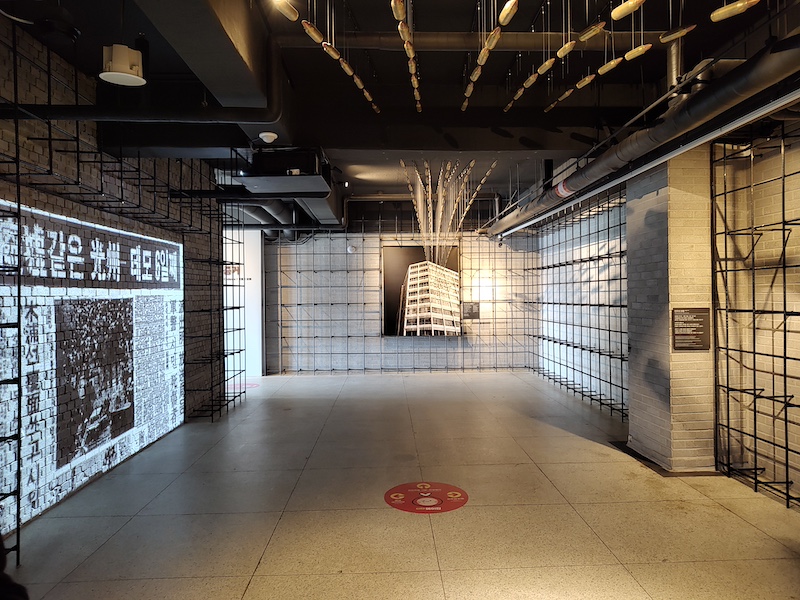
The installation is the entrance hallway to the permanent exhibition rooms. You have to go through a wide, dark corridor crossed by four overhead lines of bullets aimed at you and a black and white video of the helicopter flying over the building projected to the side. In the following room, full of natural light, on the side facing the window, you can see a concrete column marked with dozens of bullet holes near the ceiling. The evidence is accompanied by didactic texts about when, what, and how the attack against the building occurred and who was responsible.
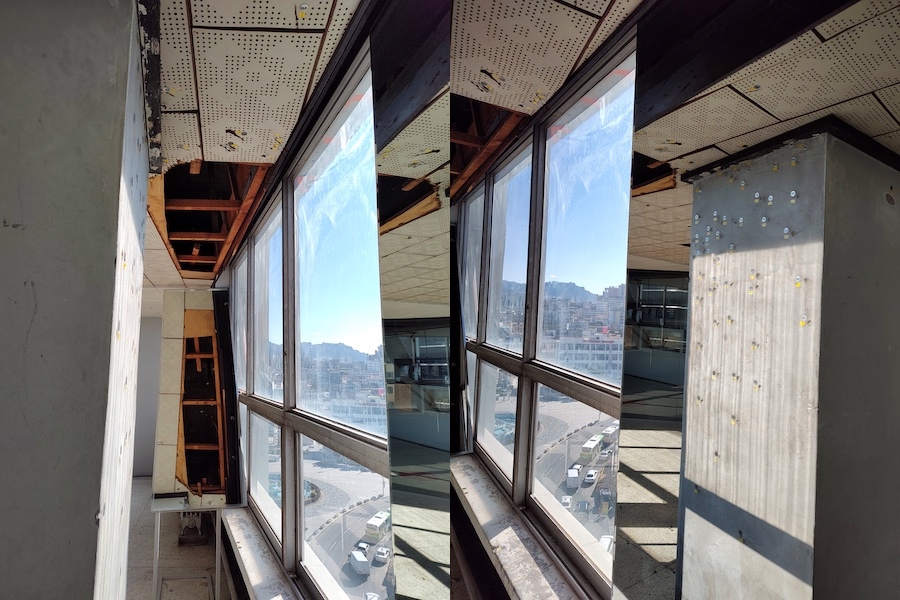
Next is the main room. Once again, I entered a dark room with an incredible video installation that recreates the moment in which from a military helicopter a short distance from the building, about 100 meters, soldiers shot with M16 rifles at the same place where one is watching the video.
The 3D projection is suitable for all audiences and is complemented by video games for visitors, archive photos, and supporting documents. It is neither a horror show nor a trivialization of the past. Children, teenagers, and adults can learn without being traumatized. From a narrative of peace and respect for human rights, the exhibition balances historical memory with the authenticity of the facts.
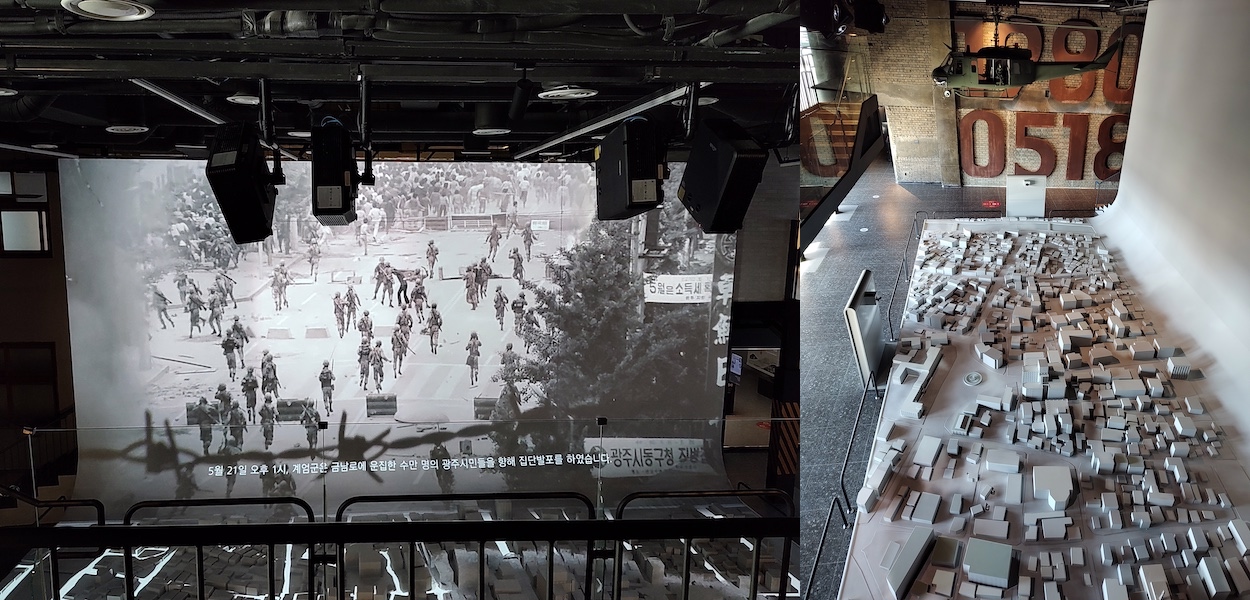
My favorite hall is the so-called “distorted history”. The significance of this exhibition stems not so much from its intrinsic value as from its potential for ideas and reflection. As soon as you get in, you will find four original doors marked by violence with important questions written on them. To know the truth and how the deniers have distorted events, you have to open the door. The answers not only show how the media manipulates information but also how in democracy the collaborators of the past carry out campaigns to discredit memory policies.
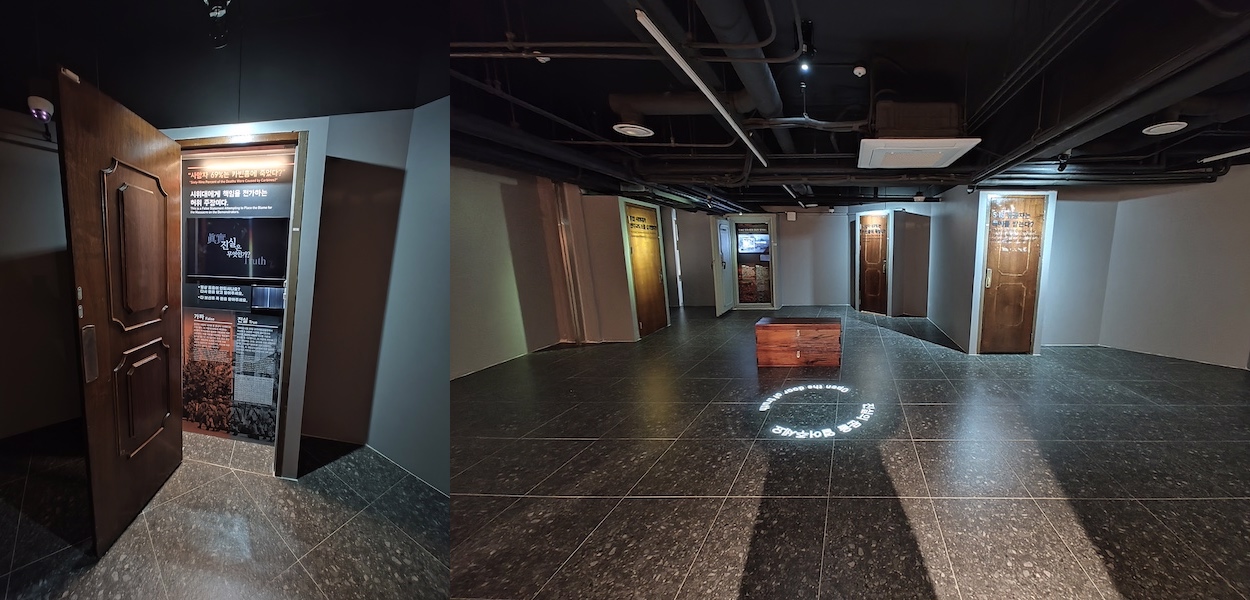
Finally, the tour closes with witness testimonies. The “voices of truth” are the testimonies of breathed families and the wounded, media reports, hospital staff, members of the martial law forces, and witnesses.
These exhibitions are permanent and have translations into Chinese, Japanese, and English. If you’re traveling to South Korea and want to learn more about its recent history, visit Jeonil Building 245. You can get to and from Gwangju on the same day if you’re in Seoul. It’s just important to remember that there are two cities called Gwangju. In case you have doubts, ask which is the city of the 1980 massacre because all Koreans, even the conservatives, know where it happened.
Executive Editor: Hsieh, Chia Chun
閱讀更多:【國內外資訊】
(本系列文章與文化部博物之島同步刊登)

